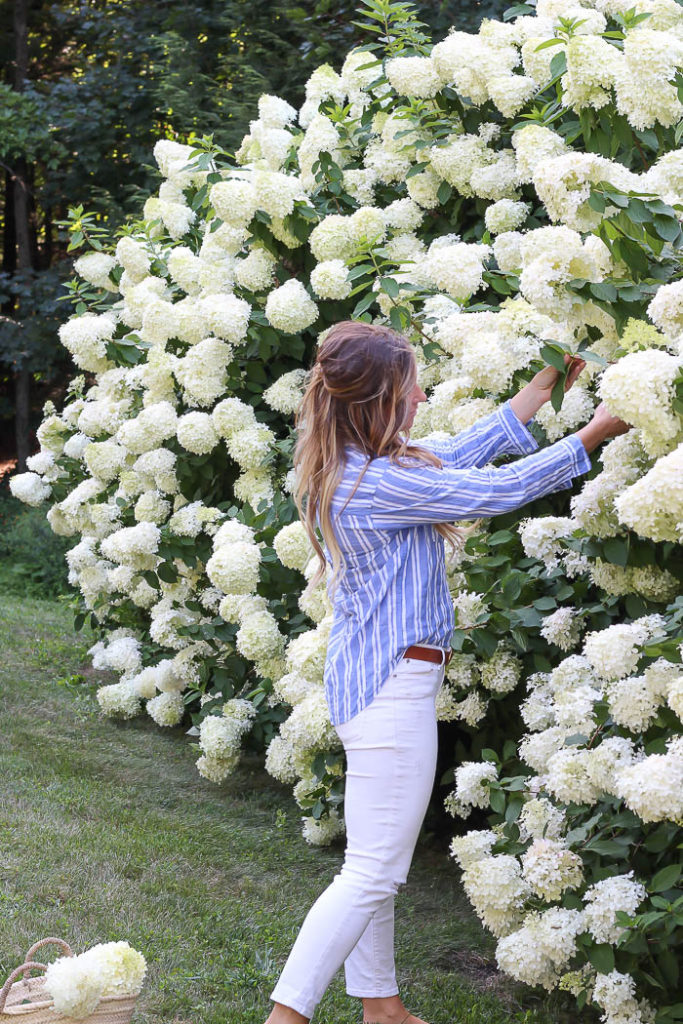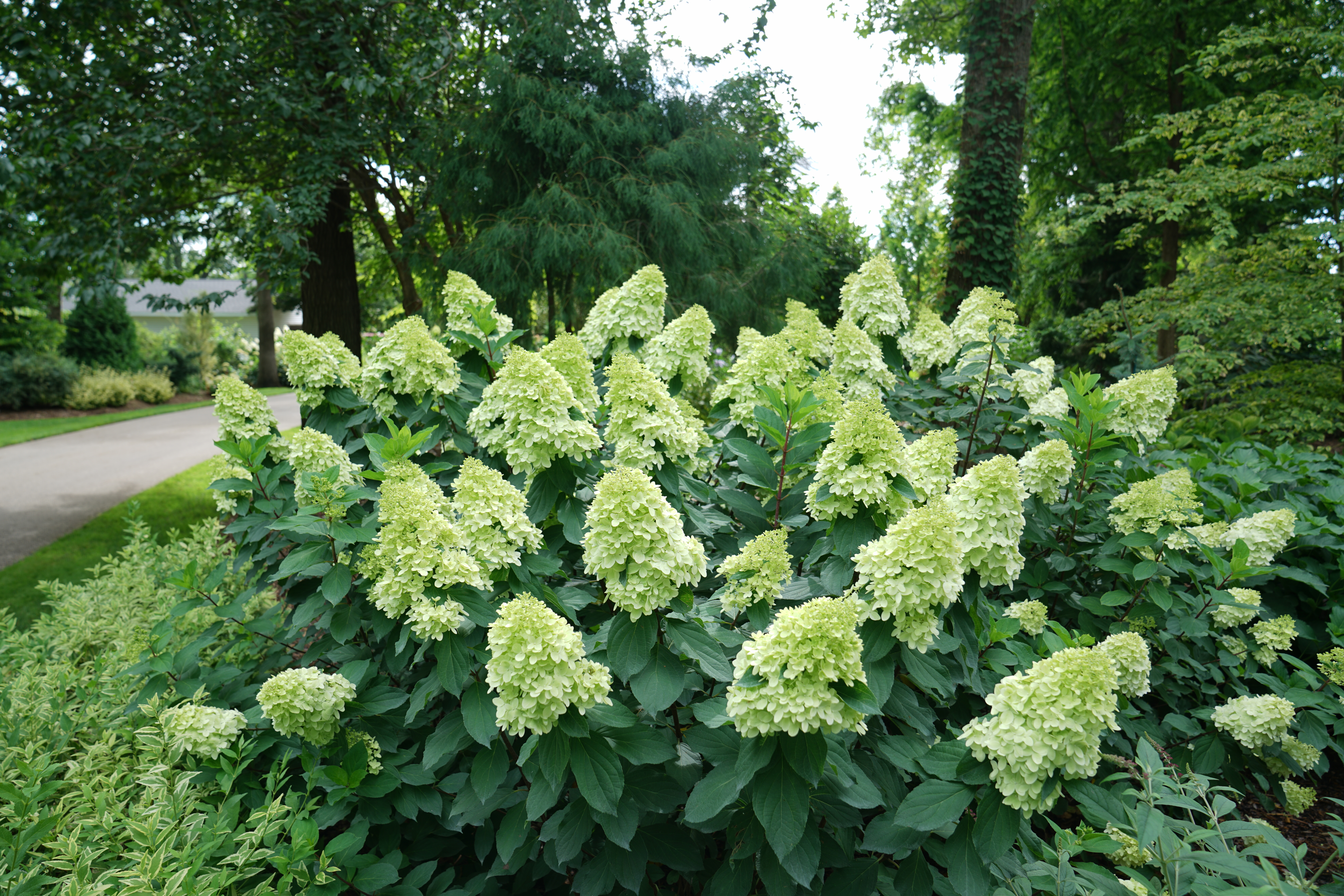Limelight Hydrangea: The Showstopper Of Your Garden
Limelight Hydrangea: The Showstopper of Your Garden
The limelight hydrangea is a stunning shrub that is sure to add a touch of elegance to any garden. With its large, conical flowers that bloom in shades of lime green, white, and pink, the limelight hydrangea is a real showstopper.
In this blog post, we will discuss everything you need to know about limelight hydrangeas, including:
- Their history and origins
- Their unique features
- How to plant and care for them
- Where to place them in your garden
- How to propagate them
History and Origins
The limelight hydrangea was first introduced in the Netherlands in the early 1990s. It was created by plant breeder Peter Zwijnenburg, who crossed four different hydrangea varieties to create the perfect plant.
The limelight hydrangea quickly became popular, and it is now one of the most popular hydrangea varieties in the world. It is known for its large, conical flowers that bloom in shades of lime green, white, and pink.
Unique Features
The limelight hydrangea has several unique features that make it stand out from other hydrangea varieties. These features include:
- Large, conical flowers: The limelight hydrangea produces large, conical flowers that can reach up to 10 inches in diameter.
- Shades of lime green, white, and pink: The flowers of the limelight hydrangea start out as lime green and then gradually fade to white or pink.
- Drought tolerant: The limelight hydrangea is drought tolerant, once it is established.
- Low maintenance: The limelight hydrangea is a low-maintenance plant, and it requires only minimal care.
Planting and Care
The limelight hydrangea is a relatively easy plant to grow. It prefers full sun to partial shade, and it grows best in well-drained soil.
When planting a limelight hydrangea, dig a hole that is twice the width of the root ball. Add some compost or manure to the soil, and then plant the hydrangea. Water the hydrangea thoroughly, and then mulch around the base of the plant.
The limelight hydrangea does not require a lot of fertilizer. A light application of fertilizer in the spring will help to keep the plant healthy.
Where to Place in Your Garden
The limelight hydrangea is a versatile plant that can be used in a variety of settings in your garden. It can be planted as a specimen plant, or it can be used to create a hedge or border.
The limelight hydrangea is also a good choice for cut flowers. The flowers will last for several days in a vase.
Propagating
The limelight hydrangea can be propagated by taking cuttings in the spring or summer. To take a cutting, simply cut a 6-8 inch section of stem from the plant. Remove the bottom leaves from the cutting, and then dip the end in rooting hormone. Plant the cutting in a pot of well-drained soil, and keep the soil moist. The cutting should root in about 4-6 weeks.
Conclusion
The limelight hydrangea is a beautiful and versatile plant that is sure to add a touch of elegance to any garden. If you are looking for a low-maintenance plant that will produce stunning flowers, the limelight hydrangea is a great choice.
Are you looking for a beautiful and easy-to-grow hydrangea? If so, you should definitely check out Proven Winners Limelight Hydrangea. This stunning shrub is known for its large, lime green flowers that bloom in summer and fall. The flowers eventually turn pink or red, creating a beautiful and vibrant display.
Limelight Hydrangea is a hardy plant that can tolerate a wide range of climates. It is also relatively drought-tolerant, making it a great choice for gardens in hot, dry areas.
If you are looking for a hydrangea that will add beauty and color to your garden, Proven Winners Limelight Hydrangea is a great option. To learn more about this amazing plant, please visit .
FAQ of proven winners limelight hydrangea
1. What are the best conditions for Limelight Hydrangea?
Limelight Hydrangeas prefer full sun in cold climates, but afternoon shade in warmer ones. They also require well-drained soils that do not remain soggy for any amount of time.
2. How do I prune Limelight Hydrangea?
Limelight Hydrangeas can be pruned in the spring, after the danger of frost has passed. Simply cut back by one-third its total height. This will encourage new growth and promote flowering.
3. What is the color of Limelight Hydrangea?
Limelight Hydrangeas start out as pale green flowers in the summer, and then gradually transition to soft white, cream, and pink through the fall. The exact color of the flowers can vary depending on the soil pH, but they will always be in the pink/red range.
4. How tall does Limelight Hydrangea grow?
Limelight Hydrangeas can grow to be 6-8 feet tall and 4-6 feet wide. They are a relatively fast-growing shrub, and can reach their full size in 3-5 years.
5. How do I care for Limelight Hydrangea?
Limelight Hydrangeas are relatively low-maintenance shrubs. They need regular watering, especially during the summer months. They also benefit from an annual application of fertilizer in the spring.
Image of proven winners limelight hydrangea
5 different images of "proven winners limelight hydrangea" from Pinterest:
This image shows a mature Limelight Hydrangea in full bloom. The flowers are a bright green color, which will eventually fade to pink and red as the season progresses. The plant is well-maintained and looks healthy.
This image shows a Limelight Hydrangea that is planted in a container. The plant is a bit smaller than the one in the previous image, but it is still healthy and in full bloom. The green flowers look vibrant against the white of the container.
This image shows a Limelight Hydrangea that is planted in a garden. The plant is surrounded by other flowers, which gives it a lush and inviting appearance. The green flowers are a beautiful contrast to the other colors in the garden.
This image shows a Limelight Hydrangea in fall. The flowers have faded to a beautiful shade of pink, which is complemented by the red leaves of the surrounding trees. The plant still looks healthy and vibrant, even though it is past its peak bloom time.
This image shows a close-up of the flowers of a Limelight Hydrangea. The individual flowers are large and fluffy, with a delicate green color. The petals are slightly curled, which gives the flowers a soft and inviting appearance.




Post a Comment for "Limelight Hydrangea: The Showstopper Of Your Garden"